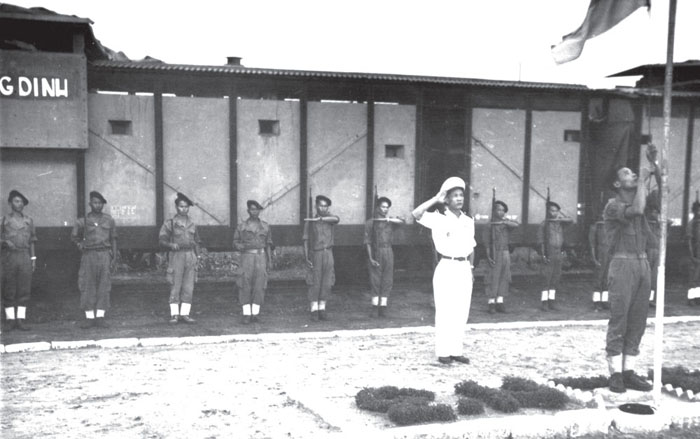
Vietnam gradually regained its sovereignty during the War in Indochina, and the ARVN (Army of the Republic of Viet Nam) was created on 1 January 1949.1 Between June 1954 and October 1955, Vietnam was ruled by Emperor Bao Dai, who was deposed in a coup which created the Republic of Vietnam. Proclaimed on 26 October 1955, the Republic, also called South Vietnam, disappeared with the fall of Saigon on 30 April 1975.2
Even before complete independence had been achieved, in 1953 the (French) armoured trains began to be transferred to the ARVN’s 1st Armoured Cavalry Regiment, which was the successor to the 4th Dragoon Regiment. On 16 August 1954, the armoured train detachments of the 5th Cavalry Regiment (Armoured Train No 5, on the line to Loc Nonh) and of the 2nd Foreign Legion Infantry Regiment (Armoured Trains Nos 2 and 3, on the line to Nha Trang), were transferred to the 1st Escort Squadron Group (1er G.E.E.) of the ARVN. In about October 1954 this unit became the 1st Vietnamese Dragoon Regiment, and assumed the role of ensuring the security of the railway network.

Saluting the flag in Phan Thiet in October 1954, in front of Armoured Train No 3. The Vietnamese flag, yellow with three red bands3 is being hoisted.
(Photo: Private Collection)
Armoured wagon armed with the turret of a Coventry armoured car, seen during an exercise at Govap.
(Photo: Private Collection)
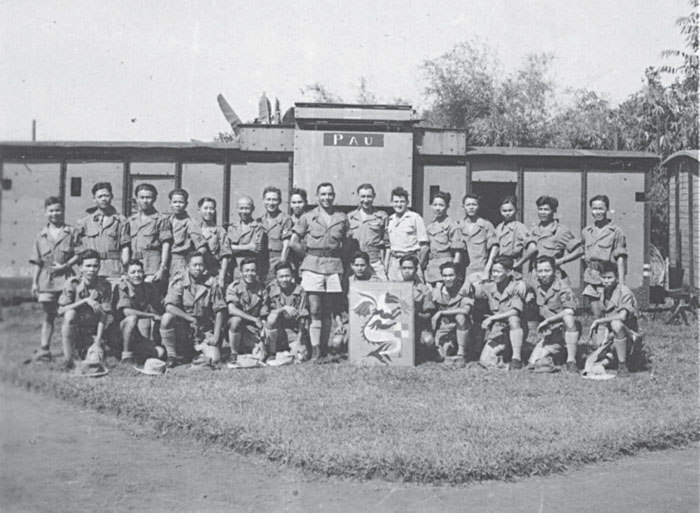
The crew of Armoured Train No 3 with its French officers in charge of handing over the equipment and training the Vietnamese. The insignia is that of the 1er G.E.E., also known as the ‘Black Dragon Squadron’.
(Photo: Private Collection)
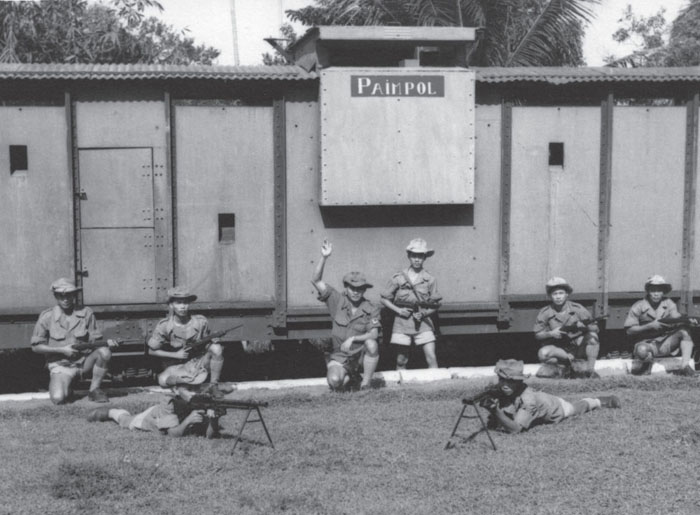
The wagons still carry their French names given to them by the 4th Dragoon Regiment.
(Photo: Private Collection)
Note the insignia of the 1er G.E.E. attached to the casemate of what is certainly the the wagon of the train commander.
(Photos: Private Collection)
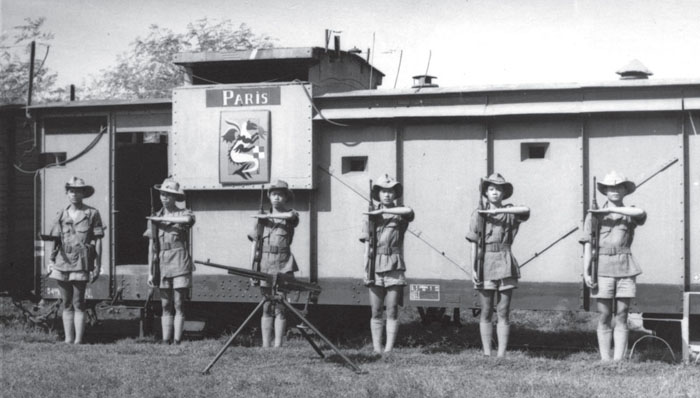
During the Vietnam War, passenger and goods trains were protected by the insertion of armoured wagons in the rakes, manned by men drawn from eight companies of civilian guards. In addition, reconnaissance runs were carried out by Wickham armoured trolleys purchased from Malaysia in 1962.
As the war progressed, the railway network shrank to the point where, at the fall of Saigon, the only line still in use was the one linking the capital to Bien Hoa, a distance of just 30km (18.5 miles). Despite their chequered career, the French armoured wagons had remained in service for thirty years.
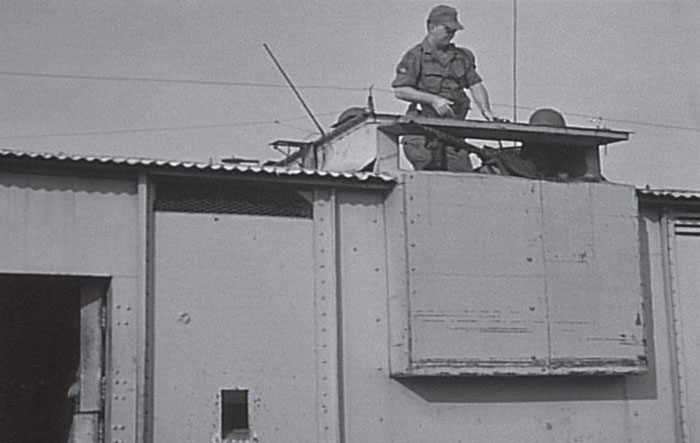
This is probably the all-metal Type GGy, which does not appear to have been modified – apart from the radio equipment – since its days in French service.
(Photo: Critical Past)
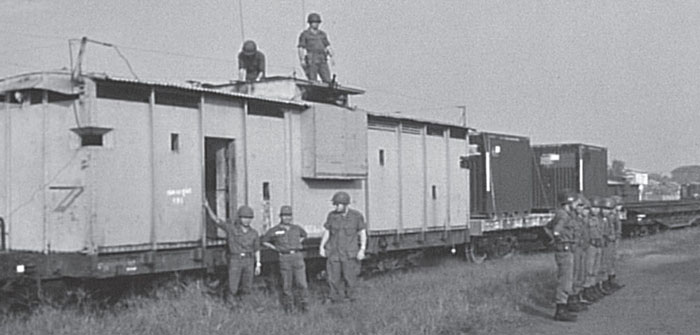
It is just possible that this wagon is the one named ‘Paimpol’, photographed twenty years earlier. One wonders what happened to these wagons. They were probably cut up for scrap or reconverted to goods traffic use. The armoured body of one has even been observed grounded for use as a guard post.
(Photo: Critical Past)
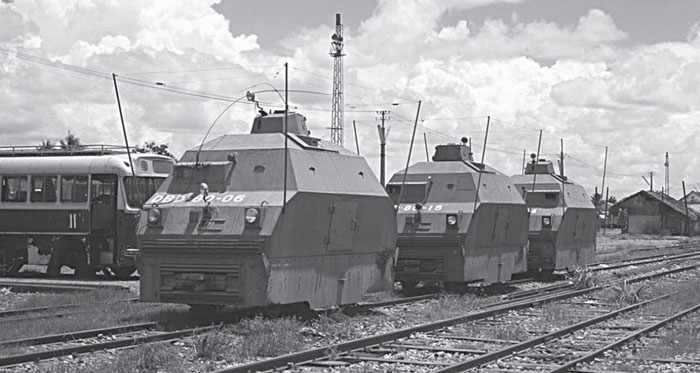
The overall condition of these trolleys owes much to the disastrous effect humidity has on modern equipment. The significance of the lettering ‘DBD’ is unknown. The third trolley in line shows that the drivers’ positions were offset front and rear.
(Photo: All Rights Reserved)
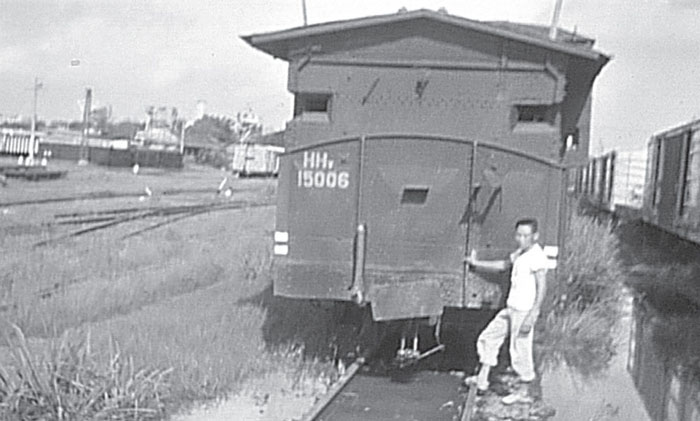
Armoured wagon constructed on the chassis of a Type HHy bogie wagon. At the side we can see an extension to the casemate which allowed for observation and firing along the axis of the train.
(Photo: Critical Past)
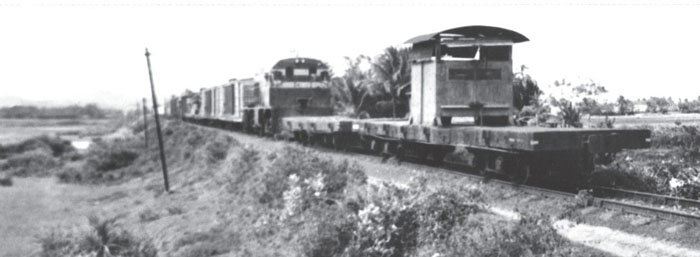
Phu Bai, 1969. This shows the classic layout of two safety wagons preceding the train. The first of the two wagons has an observation cab. It appears that the locomotive is a General Electric Type U8B.4
(Photo: AWM)
SOURCES:
Archives:
SHD (10 H 1276, 10 H 1729, 10 H 4477, 10 H4559).
Private archives.
Videos:
Military History Video: ‘Railroad Support Vietnam’ (506th Field Depot, 1967, 45 minutes)
1. Article 60 of the Constitution of the Fourth Republic stipulated that the French Union was formed, on the one hand by the French Republic, and on the other hand by the territories and states associated with France, among which were the three states of the Indochinese Union created in 1887.
2. Unification of North and South Vietnam was proclaimed on 2 July 1976.
3. Created in 1890. The gold symbolised the ruling dynasties and the three red bands, Tonkin, Annam and Cochinchina.
4. Built in 1963, forty-eight units were delivered to the Vietnamese Railways. In 1975, they were re-designated as Type D9E.